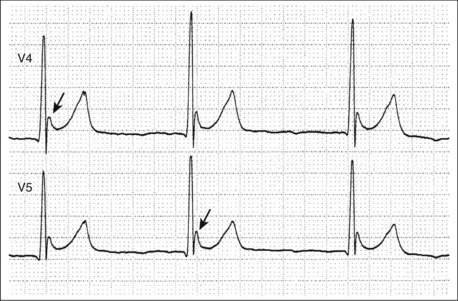Chapter 76 Hypothermia
4 What is the J wave?
Also known as the Osborn wave, or hypothermic hump, the J wave is a hypothermia-related elevation of the J point at the junction of the QRS complex and ST segment (Fig. 76-1). J waves appear at temperatures at or below 32° C and are usually first seen in leads II and V6. As the temperature decreases further, they increase in size and may appear in the precordial leads. The J wave is neither specific, nor sensitive, nor prognostic in hypothermia. Automated electrocardiographic interpretation software may misinterpret the J wave as ischemic injury (ST elevation), and it is important not to fall into this trap.
7 You said mechanical agitation can cause arrhythmias. Is it acceptable to endotracheally intubate? What about central venous or pulmonary artery catheterization?
< div class='tao-gold-member'>
Only gold members can continue reading. Log In or Register to continue
Stay updated, free articles. Join our Telegram channel

Full access? Get Clinical Tree








